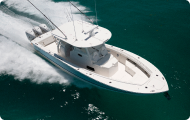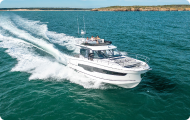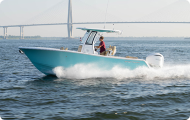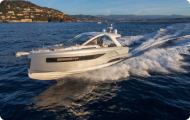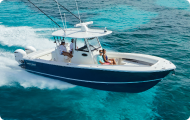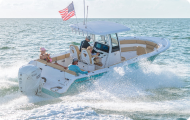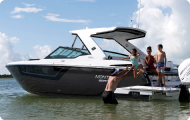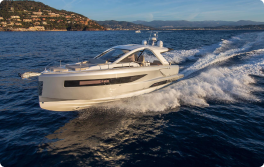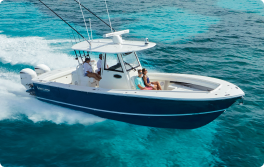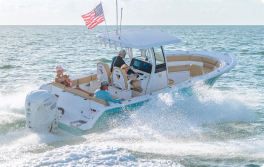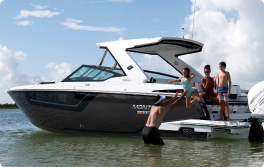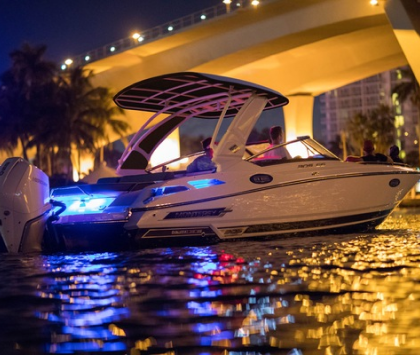A stealth approach gives the angler an opportunity to land his fly right into this school of hungry redfish.
Sight fishing can be one of the most adrenaline filled activities on the water, when done right. Not many things compare to making the perfect cast at a fish, and watching it all come together as your lure or fly disappears into the fish’s gullet. Thus said, this can be a daunting task, with as little as being six-inches off of the intended target ruining your opportunity. Here are five tips to help you improve your sight fishing game.
1. Good Glasses
What is the number one item needed for sight fishing? Glasses! If you can’t see the fish, you might as well head back to the house. A good pair of polarized sunglasses cuts down glare on the water’s surface, allowing you to see into the water. A quality pair of glasses also reduce fatigue on your eyes, for those long days on the water. Many companies, such as Costa Del Mar, have multiple lens options, allowing you choose the right pair (or pairs) for the job. I prefer to have a pair that offers high contrast, and a pair for low light conditions, incase the clouds roll in. Note: pair up your glasses with a dark under-brim hat, reducing glare, giving you better contrast and visibility into the water.
2. Stealth
Fish have heightened senses in shallow water, using their lateral line and eye sight to watch for potential predators. That means excessive noise and vibration from the boat can clear out a flat full of fish in seconds. Avoid stomping around the deck, giving off pressure wakes that fish can feel. Poling is the best form of stealth in shallow water. If using a trolling motor, try to keep it on a slow, constant setting. The changing in speed can be felt throughout the lateral line and spook out fish.
3. Weather and Timing
Something you should do before any and every fishing trip should be to check the weather. This is very important when it comes to sight fishing though. The main ingredient in the sight fishing recipe is sun, without it, seeing fish can be nearly impossible. It’s good to have a back up fishing plan on cloudy days.
One of my favorite things about sight fishing is that you can sleep in! No need to be up before the rooster crows, like I said before, sun is a necessity for sight fishing, the mid-day high sun is typically your best time. Go get breakfast, let the busy boat ramp clear out, then hit the water.
4. Elevation
The higher you are, the further you can see down into the water. It’s that simple. This is why most modern day skiffs have a raised casting platform on the bow for the angler and a poling platform aft, for the guide. These allow you to spot fish further away, giving better chances at getting a cast on the fish before it senses or sees you there and spooks. Rigid, roto-molded coolers work great for giving an elevated line of sight as well.
5. Make a Cast
We all dream of that perfect scenario, but majority of the time, it doesn’t happen the way we plan. Sometimes you just see a silhouette of what you think is a fish. Or better yet, the shadow that you thought was a log, happened to turn into a giant Snook, that you now have kissed your shot at goodbye. If you have any thoughts that what you’re looking at is a fish, make a cast! It won’t hurt, and you will be surprised at how many times that inanimate object in the water just happens to be a fish, laid up, waiting on your presentation.


